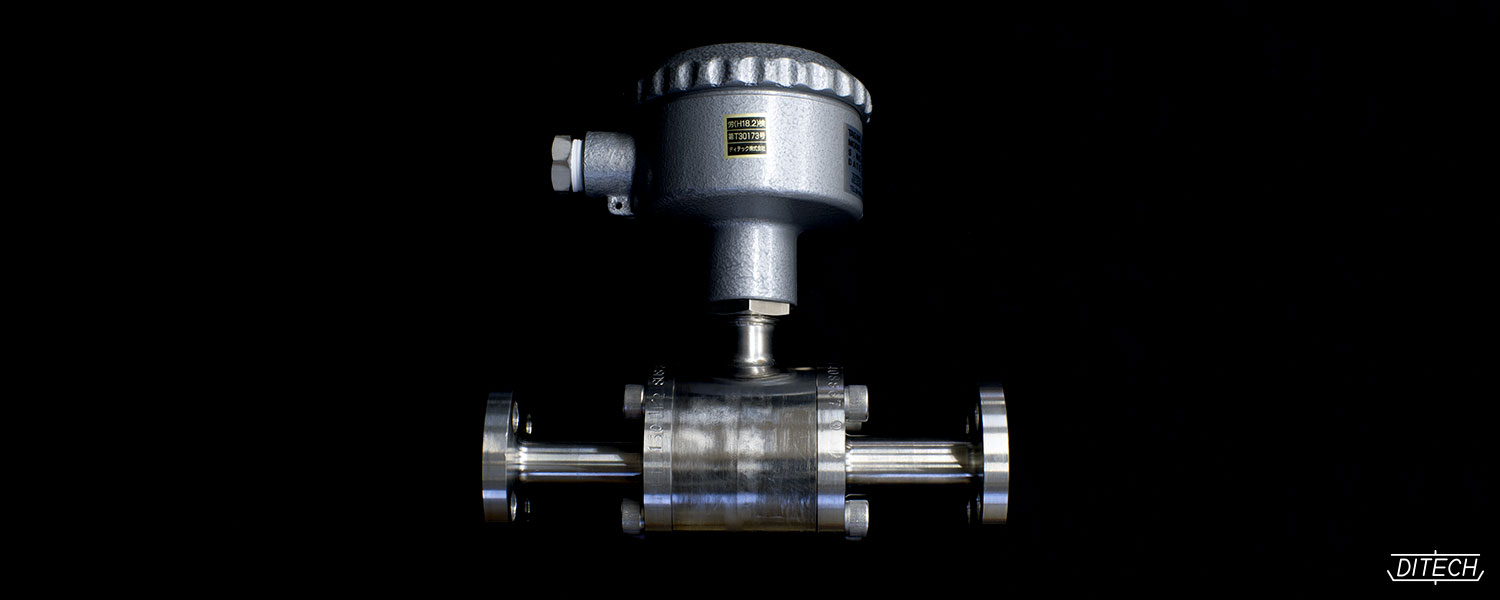Manufacturer of Level Switch, Level Transmitter,
Detector and Sensor DITECH,LTD.
Transmitters for liquid
Our transmitters for liquids have been developed and calibrated for measurement with a series of Relative-permittivity meter, Conductivity meter, Weir type flowmeter, etc.
Transmitters detect electrostatic capacitance changes by the relative-permittivity, conductivity and water flow of the measured substance, and then converts these changes into an integrated signal (DC・mA) to transfer continuously as output signal.
Transmitters generally output the signals of (4mA~20mA) or (DC1V~DC5V) to measure the range of 0%~100%.
Relative-permittivity meter
Model QBS-RP
(Non-explosion-proof type)
Model NSB-RP
(Intrinsically safe construction)
The relative-permittivity meter is designed to measure, in a manufacturing process, the relative permittivity of a liquid by mounting a detector on the bottom of a mixing tank.
Click here for more information on Relative-permittivity meter.
Conductivity meter
Model QBS-CM
(Non-explosion-proof type)
Model NSB-CM
(Intrinsically safe construction)
This device is designed for manufacturing processes to measure the electrical conductivity of liquids with variable conductivity (electro-conductivity) such as reacted liquid in-process and online, and to output as a standardized signal.
Minimal-leakage meter for piping
Model IP-QBS-F
(Non-explosion-proof type)
Model IP-NSB-F
(Intrinsically safe construction)
The minimal-leakage meter for piping is designed to detect, in a manufacturing process, liquid leaks from valves on process piping.
Click here for more information on Minimal-leakage meter for piping.
Capacitive oil-in-water meter
Model QBS-OW
(Non-explosion-proof type)
Model NSB-OW
(Intrinsically safe construction)
This Capacitive oil-in-water meter is designed to detect the oil contained in the water in pipelines and tanks for suction and discharge water.
Click here for more information on Capacitive oil-in-water meter.
Capacitive moisture-in-oil meter
Model QBS-MO
(Non-explosion-proof type)
Model NSB-MO
(Intrinsically safe construction)
The capacitive moisture-in-oil meter is designed for manufacturing processes to detect moisture content by identifying the relative permittivity of the mixture.
Click here for more information on Capacitive moisture-in-oil meter.
Weir type flowmeter
Model QBS-F
(Non-explosion-proof type)
Model NSB-F
(Intrinsically safe construction)
Using a triangular or rectangular weir, this weir type flowmeter accurately determines the amount of wastewater emitted by continuously measuring the hydraulic head.
 DITECH,LTD.
DITECH,LTD.













